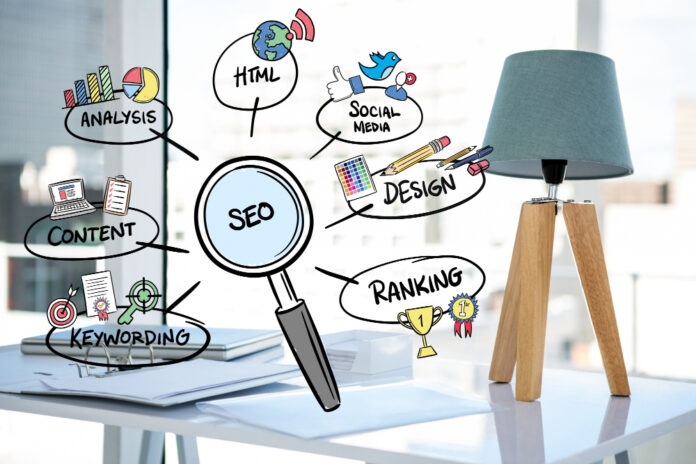As businesses experience rapid expansion, the need to adapt digital marketing tactics to support this growth becomes not just beneficial, but essential. A growing enterprise faces an evolving digital landscape, increasing competition, and rising customer expectations. Navigating these challenges successfully means developing SEO strategies that are scalable, flexible, and forward-thinking. By focusing on building and refining a robust SEO framework, businesses can ensure that their online presence remains highly visible and effective at every stage of growth. In this context, partnering with enterprise SEO services becomes a strategic differentiator. These experts can help organizations efficiently scale their SEO efforts, ensuring that marketing initiatives align with both market demands and the organization’s operational capacities. Embracing scalable solutions like these not only enables current growth but also lays the groundwork for long-term, sustained success in the competitive digital arena.
This comprehensive guide explores how foundational SEO, innovative content strategies, and advanced technologies can be harnessed to support ambitious business goals in a sustainable way. By delving into actionable steps and proven methodologies, you’ll learn how to build an SEO program that is robust, flexible, and designed to expand seamlessly alongside your organization. Whether your company is just starting to scale or is already experiencing exponential growth, these insights provide the blueprint necessary to keep your SEO initiatives effective and future-proof.
Building a Robust SEO Foundation
A scalable SEO framework begins with a meticulously organized website. Without a strong technical and architectural foundation, attempts to scale SEO efforts will encounter roadblocks—be it broken links, crawl errors, or poor user experiences. The following elements are central to setting up this technical base:
-
Website Structure:
A logical, streamlined site architecture enhances both the user’s journey and a search engine’s ability to crawl your site. By organizing content into clear silos and utilizing effective internal linking, you enable both users and bots to easily navigate your offerings, discover related content, and reinforce topical depth. This facilitates the transfer of authority throughout your site, benefiting high-priority pages as you scale content and target new search opportunities.
-
Mobile Responsiveness:
The ubiquity of smartphones means that a growing proportion of web traffic comes from mobile devices. Google now prioritizes mobile-first indexing, making mobile optimization crucial not just for user experience, but for search rankings as well. Responsive design, intuitive navigation, and adaptive images contribute to better SEO results and a more engaging site for mobile visitors.
-
Fast Load Times:
Page speed has become a decisive ranking factor in search algorithms, directly impacting user satisfaction and conversion rates. As a site grows, optimizing load times by compressing images, leveraging browser caching, and minimizing server response times becomes increasingly important. Fast websites keep visitors engaged, reduce bounce rates, and send positive signals to search engines.
Investing early in these foundational elements pays dividends as your SEO strategy matures. By ensuring technical soundness, you create a stable platform on which a scalable, powerful SEO initiative can flourish, supporting expansion with fewer disruptions and greater efficiency.
Content Clustering and Programmatic SEO
With the growth of a business comes a surge in the amount and variety of content required to address wider audiences and new market segments. Managing this at scale—without sacrificing quality or brand messaging—requires both structure and efficiency. Content clustering and programmatic SEO provide the framework and leverage necessary for success:
Content Clustering
Content clustering organizes articles, guides, and landing pages around central themes, known as pillar pages, with supplemental content clusters supporting them. This approach not only boosts your site’s topical authority but also improves user experience by guiding visitors through well-structured informational paths. For example, a pillar page on “B2B SEO strategies” can serve as the hub, with detailed cluster pages on keyword research, link building for B2B, and advanced conversion optimization techniques. This interconnected structure strengthens internal linking, signals depth and expertise to search engines, and increases the likelihood of capturing additional SERP features and broader keyword rankings. To explore more about organizing content for maximum SEO impact, check out Backlinko’s guide on topic clusters.
Programmatic SEO
Programmatic SEO enables organizations to rapidly scale content production, especially for targeting long-tail keywords, niche audiences, or vast product/service categories. By using templates, structured data, and automation, companies can generate hundreds (or thousands) of optimized landing pages tailored to specific user intents. For example, a SaaS company aiming to attract regional business may use programmatic SEO to launch localized service pages for each metro area, significantly increasing its organic reach without individual manual page creation. The result is enhanced relevancy, greater organic footprint, and sustained traffic increases—such as one company achieving a 38% rise in organic sessions through this approach.
Leveraging AI and Automation
As businesses strive to manage larger and more complex websites, manual SEO activities can quickly turn into operational bottlenecks. This is where AI and automation revolutionize SEO at scale, making advanced tactics accessible and sustainable for growing enterprises:
-
AI-Powered Keyword Research:
State-of-the-art SEO tools equipped with artificial intelligence can analyze vast datasets, reveal high-impact keyword opportunities, identify competitive gaps, and spot emerging trends in real time. This empowers teams to prioritize efforts on targets with the greatest ROI and sustain a competitive advantage as markets evolve.
-
Automated Auditing:
Automated site audits can detect issues—from broken links to duplicate content to slow-loading pages—long before they become significant. These tools provide ongoing diagnostics to ensure your site’s technical foundation stays robust and responsive to best practices as you scale.
-
Content Optimization:
AI-driven software goes beyond keyword stuffing, examining SERP features, analyzing user intent, and comparing on-page elements to recommend meaningful improvements. This intelligent feedback loop supports the continuous refinement of content at scale, making your SEO processes agile, data-driven, and effective.
By automating labor-intensive tasks and unleashing data analytics, your team can shift focus from routine maintenance to strategic growth initiatives. This added agility allows you to capitalize on new trends and search opportunities as they arise—essential for businesses in fast-moving markets.
Regular Audits and Data-Driven Decisions
Achieving and maintaining SEO performance at scale isn’t a one-time effort—it’s a process of ongoing optimization and refinement. To ensure strategies stay relevant and effective, businesses must embrace periodic audits and proactive, data-driven decision-making:
-
Routine Site Audits:
Regular reviews are crucial for identifying technical errors, outdated content, or gaps in your SEO framework. These audits safeguard against overlooked problems that can hinder scalability, while also finding opportunities for optimization and innovation.
-
Analytics and KPIs:
Implementing advanced analytics platforms is vital for monitoring key performance indicators such as traffic quality, user engagement, conversion rates, and keyword movement. By tying KPIs directly to business objectives, organizations can measure the impact of their SEO efforts accurately and transparently, adjusting strategies as conditions demand.
-
Iterative Improvements:
A culture of continuous improvement means using data to guide your SEO roadmap. Experiment, test, measure, and iterate often. This approach fosters adaptability and keeps your marketing strategies agile in the face of ever-changing digital markets.
Empowering your marketing teams with actionable data not only drives sustainable results but also builds organizational confidence, enabling proactive decision-making and strategic alignment as the company continues to expand.
Conclusion
Scaling SEO strategies for growing businesses is a complex, multidimensional process that blends technical expertise, strategic content initiatives, and smart automation. By establishing a sound foundation, embracing advanced content organization, leveraging AI, and adhering to a disciplined cycle of auditing and improvement, businesses can transform their digital presence to reach new markets and achieve lasting growth. Solutions such as enterprise SEO services are invaluable partners in this journey, providing the tools and strategic guidance necessary to compete and thrive. With the right approach and resources, any organization can unlock scalable, sustainable growth and secure a dominant position in today’s dynamic online marketplace.
Find a Home-Based Business to Start-Up >>> Hundreds of Business Listings.














































